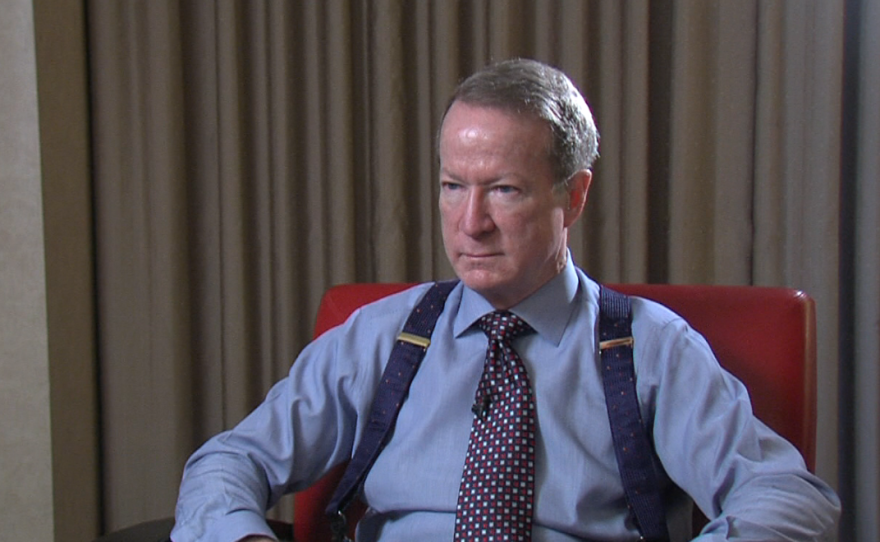U.S. Assistant Secretary of State William Brownfield was in Southern California this week, including San Diego, to build federal partnerships with state and municipal law enforcement.
The idea is to have local agencies help with international operations being carried out by the State Department because federal law enforcement agencies are tapped out.
Here are edited excerpts from an interview he did Tuesday with KPBS at the Embassy Suites San Diego Bay.
Q. It appears that Mexican cartels are smuggling cheap heroin and methamphetamine across the border at higher rates to replace marijuana. How worried are you?
A. As demand for cocaine has dropped, individuals who had fed a heroin or opiate-based habit by using diverted medicines are now finding that the cost of doing that has risen to such an extent that it is now cheaper for those individuals to buy pure heroin on the black market.
That, in turn, is more dangerous because you’re dealing with professional criminals and narcotics traffickers, because you don’t know the purity of the heroin that you are buying. And it is far more difficult to control the amount you are taking in if you are taking it as pure heroin, leading to more overdoses, more deaths. That is the challenge we are facing right now.
Q. Last month, a drone carrying methamphetamine packets crashed near the San Ysidro border crossing here in San Diego. How well equipped is the U.S. to combat drug smuggling through drones?
A. Drones are probably one of the great challenges of the 21st century. Part of it is what you just described, which is its use by criminal organizations to move product across borders without detection. I have to tell you, I don’t have a good answer to your question right now. But I can tell you that it is part of this package of issues that we have to work through over the next 10 years.
Q. What about the use of drones by law enforcement. The inspector general concluded last month that the government’s border drones program is very expensive and results in far fewer arrests of people crossing the border illegally. How much faith do you have in drones reducing illegal activity at the border?
A. Fair question. I am responsible for supporting counter-drug and other programs that combat international crime in more than 80 countries around the world. And I acknowledge, we actually have considered and even tested the use of drone technology in a number of situations.
Roughly two years into this process, we actually do not support UAVs (unmanned aerial vehicles — or drones) in any of our programs. What conclusion should you draw from that? The correct conclusion from my perspective is we have not yet figured how to balance all of the issues: cost versus benefit, reliability of the equipment, privacy issues, and then, frankly, their overall effectiveness.
Q. The number of unaccompanied minors crossing into the U.S. from Mexico has fallen since the summer. But immigration experts say there might be a new surge in May or June. Is the Obama administration prepared to handle another influx?
A. President Obama did announce a week ago $1 billion proposed for the year 2016 to support programs in Central America, because nearly 100 percent of the unaccompanied minor children were actually coming from Central America. So the answer to your question is, yes, we have decided to commit the resources to this issue.
We’re trying to address the root causes of the problem. Poor economies. Lack of employment. Social issues. Crime on the streets. Violence. The danger and risk to children leading parents to be willing to take the risk of sending their children unaccompanied to the United States of America.
We have also recommitted to working with the institutions of government in the seven Central American countries, but particularly those that we call the “Northern Triangle” — Guatemala, Honduras and El Salvador — in order to work to ensure that they have better control over their own borders. That is how we’re trying to address the issue as we prepare for the summer of 2015.
For the full interview with Brownfield, watch the video below:







